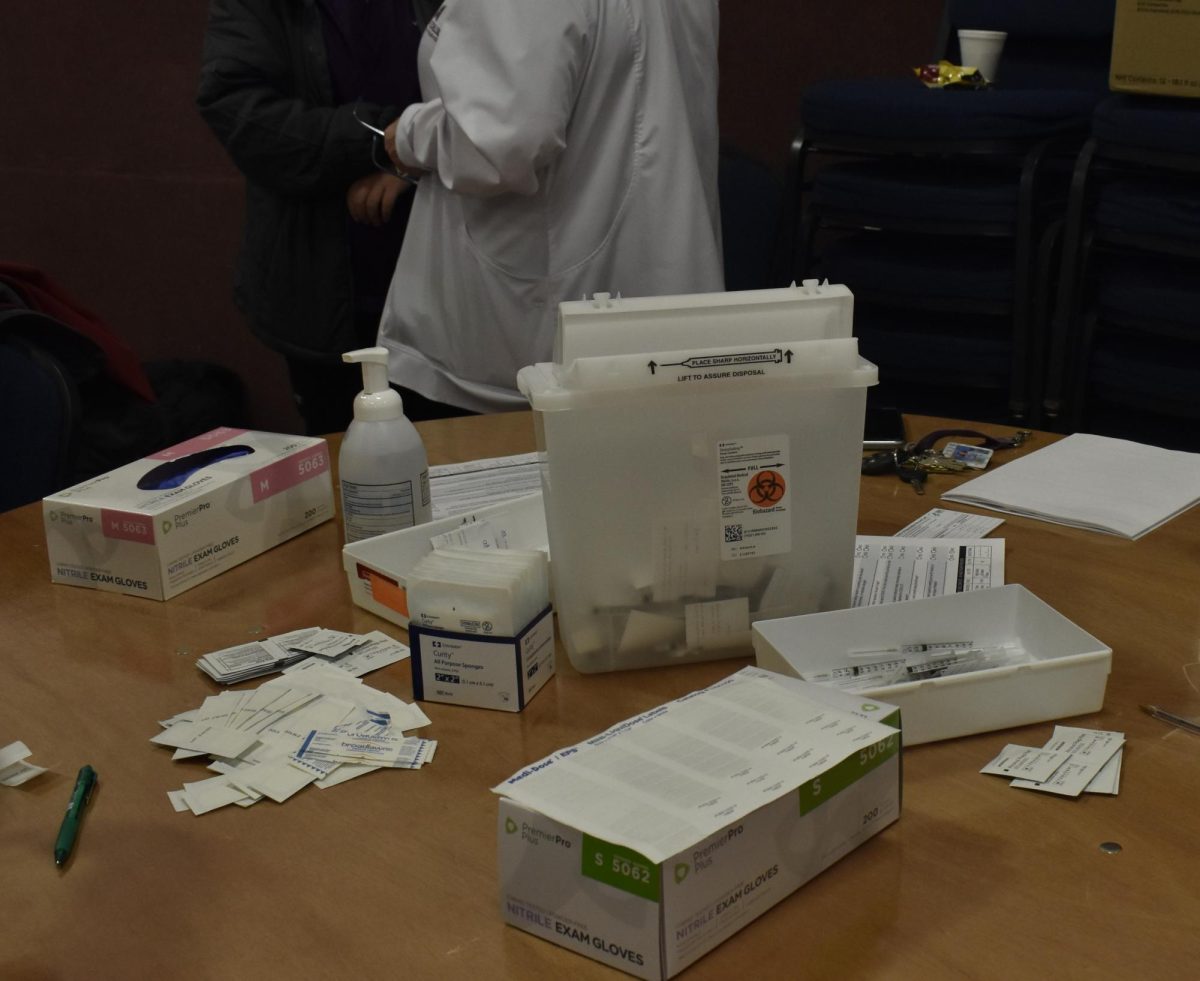
Amber Mohmand
A COVID-19 vaccine station stocked with syringes, gloves and alcohol swabs, ready to serve community members.
Primary Health Care used American Rescue Plan Act grant funds to help the growing number of uninsured residents in Story County.
During a report to the Story County Board of Supervisors on Tuesday, Primary Health Care CEO Nathan Simpson said the organization has used 95% of a $525,094 American Rescue Plan Act (ARPA) grant through Story County for between 2021 and 2022.
The funding was primarily dedicated to dental care but also included some medical expenses. Simpson said the nonprofit’s Ames Medical and Dental Clinic has seen a 15% increase in its annual number of visits since fiscal year 2023.
With a shortage of dental providers taking state insurance or patients without insurance, Primary Health Care is grateful for the county’s support, Simpson said. People lacking insurance compound with other access barriers, which Primary Health Care is working to overcome.
“Unfortunately, that need continues to grow. Our number of uninsured patients continues to increase,” Simpson said. “In fiscal year 2024 we saw about a 41% increase in the number of uninsured patients as compared to fiscal year 2023.”
Simpson said that’s been seen across the board through Primary Health Care and within other healthcare providers.
The reasoning for the increase can be attributed to ending the recent public health emergency related to COVID-19, Simpson said, and the resulting Medicaid redeterminations that were paused during the pandemic.
With Medicaid essentially unwinding, Primary Health Care saw a several percent shift from patients relying on Medicaid to being uninsured. This has been more pronounced in Ames, which Simpson said was partially due to their increased capacity for providing care.
Still, Simpson said, Primary Health Care is reaching the maximum of its capacity in its Ames clinic, and that to serve more patients would require an expansion of the facility.
United Way puts funds toward childcare and food security
In its report to the supervisors, United Way of Story County reported its impacts ranging from childcare to food security.
The organization received county funding of more than $700,000 between 2021 and 2022, $521,300 to support child care and $182,610 for food and a resource referral hub.
With the grant related to supporting childcare, Sarah Mansell, associate director of community impact at United Way of Story County, said it is working in partnership with four nonprofit childcare providers, providing them with recruitment, hiring and retention bonuses for employees.
Mansell said United Way of Story County spent 65% of the funds provided through ARPA, which are projected to last through the summer of 2026.
Between the four childcare providers United Way works with, the organizations employ 155 childcare workers, an increase from 135 last year, and on average have 129 children enrolled. She said 33 new slots have opened up this fiscal year.
“ARPA funds have provided multiple benefits over the last couple of years to our local workforce,” Mansell said. “Not only is it direct monetary payment to those childcare workers, but in addition helping keep options available for workers across the community to join the workforce or stay in the workforce.”
Ashlee Thompson, CEO and president of United Way of Story County, said ARPA funds’ support of the 211 referral call service has allowed the organization to distribute 5,064 prep materials in the first three quarters of fiscal year 2025. She said the call center has received 816 referral requests from Story County residents, with housing remaining the top need identified by callers.
She said food was the second most significant need identified through 211 last year, but that has since fallen due to the successful marketing of the wide availability of food and meal resources in the county.
Thompson said United Way Story County has provided ARPA grant funding to seven Story County emergency food programs in fiscal year 2025.
Thompson said that, together, the emergency food programs have distributed 144,916 pounds of food through the first three quarters of the fiscal year. She said the figure is “absolutely incredible.”